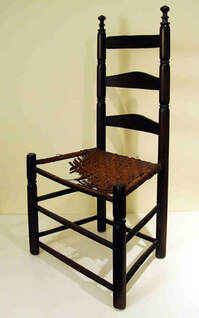Nonotuck Life Along the Kwinitekw: Revisiting Indigenous Histories in Northampton
A Public Talk by Dr. Margaret Bruchac, University of Pennsylvania
Sunday, December 8, 2019 | 4:30 pm
|
Registration:
Admission:
|
To reserve your place, registration is strongly encouraged.
Admission: $5 members, donors & students (with valid ID); $10 all others.
|
Registration has reached full capacity. To add your name to the waitlist, please email [email protected].
|
Traces of Indigenous history can be difficult to see beneath the bustle of present-day cities situated along the Kwinitekw (Connecticut River). Yet, many generations of Native people lived here, sustained by local flora and fauna and supported by trade and diplomacy with their Native neighbors. During the 1600s, when Native leaders in Nonotuck (now Northampton) invited English colonial settlers to trade, they also attempted to preserve, in written deeds, Indigenous cartographies and rights to hunt, fish, gather, and plant here in perpetuity. During the 1700s, amidst the “French and Indian Wars,” local Native communities dispersed but did not disappear; they folded into other Native communities in diaspora, retaining memories of lost homelands.
|
|
In this talk, Dr. Margaret Bruchac critically analyzes colonial documents, archaeological records, and the writings of town historians, who re-imagined the colonial era in ways that erased Indigenous perspectives. This talk will also feature a case study from the 1800s of the supposed “last of the Indians here,” Sally Maminash (1765-1853). Sally’s father and brother served alongside their white neighbors in the American military: Nathan Whiting’s 11th Company (1745), and Daniel Shay’s Company (1777). Sally, a well-regarded weaver, was a member of First Church who lived in the family of Sophia and Warham Clapp on South Street. These records offer a glimpse into the extensive kinship networks of Native people who, despite widespread prejudice, circulated freely within their traditional homelands, marketing baskets and brooms, hiring out as day labor, and dispensing Native medicines to non-Native folks. This research demonstrates how seemingly “unknown” Indigenous histories can often be recovered by revisiting Indigenous landscapes, and by dismantling the romantic stereotypes that so often push Native peoples into the vanished past.
|
|
Dr. Margaret M. Bruchac is an Associate Professor of Anthropology, Coordinator of Native American and Indigenous Studies, and Associate Faculty in the Penn Cultural Heritage Center at the University of Pennsylvania.
She is also a consultant to the Center for Native American and Indigenous Research at the American Philosophical Society, and Director of “The Wampum Trail,” a restorative research project designed to reconnect wampum belts in museum collections with their related Indigenous communities. Bruchac has long been a consultant to Historic Northampton, Historic Deerfield, Old Sturbridge Village, and other New England museums. Her new book – Savage Kin: Indigenous Informants and American Anthropologists (University of Arizona Press 2018) – was the winner of the Council for Museum Anthropology Book Award. |
Captions for Images:
- Dr. Margaret Bruchac examines a steatite (soapstone) pot at Historic Northampton as part of her work on restorative methodologies for Native American objects in museum collections.
- Chair of Sally Maminash in the collection of Historic Northampton. The chair was donated from the estate of Ruth S. Strong.
- Marge Bruchac examining the Bible of Sally Maminash at Forbes Library.
Sponsored by Herrell's Ice Cream


